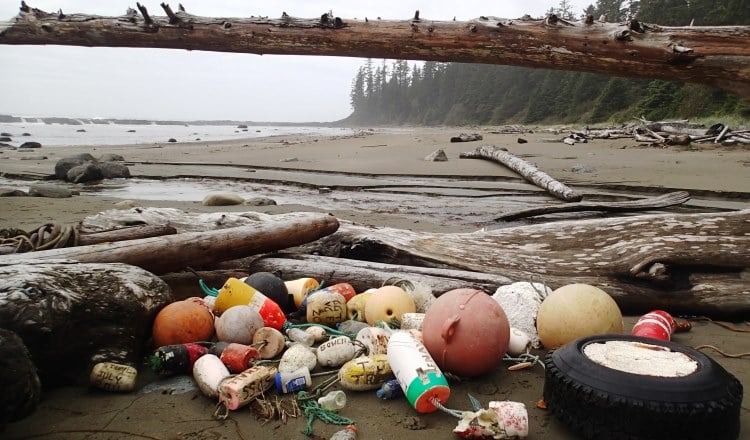Ten years after Japanese tsunami, B.C. coastal cleanup remains fresh in minds

Some 200 tonnes of material collected, but small personal items left a larger impact!
Among the trash that regularly washes up on British Columbia’s rugged shorelines, Karla Robison still keeps her eyes peeled for pieces of humanity lost a world away.
“We don’t call the tsunami debris, garbage,” she says, reflecting on the 2011 Japanese disaster. “We were finding parts of people’s homes or buildings, that had floated all the way over to our shoreline.”
Robison, environmental and emergency service specialist for Greenwave Environmental Consulting, has spent much of the past decade coordinating efforts to clean up Vancouver Island’s western coastline.
Speaking to CBC’s All Points West, Robison said the massive effort to collect and comb though the tsunami wreckage changed her life.
“The force of nature is just unbelievable, and the 10th anniversary is a certainly a good time to do some reflection.”
In the afternoon of March 11, 2011, a strong earthquake offshore northeastern Japan created severe damage on land — including a nuclear accident at the Fukushima power plant south of Sendai — and triggered towering tsunami waves that destroyed coastal towns in the area.
An estimated 18,500 people were killed, many swept out to sea along with homes, businesses, docks and boats.
Robison was just a year into her job as the environmental and emergency service manager for the District of Ucluelet when the Japanese Consulate in B.C. warned of incoming waves of debris, issued a call for help and provided over a million dollars in cleanup funding.
“There’s no borders in the ocean. This debris can make landfall anywhere,” Robison notes.
Agencies and community groups from Alaska to California started coordinating. The Japanese government sent their own cleanup crews and volunteers to help.
“We were able to share methodologies, how best to cleanup shorelines, in some of the most rugged and remote coastlines.”
Robison and high school students regularly monitored and surveyed shorelines using protocols from the U.S. National Oceanic and Atmospheric Administration to gauge the volume of debris.
She says the clean-up initiative was “a remarkable example of cooperation” and showed the impact that international collaboration can have on protecting marine environments from debris.
The first wave of heavy items washed up in November of 2012, while a peak of moderate debris hit in the spring of 2013
From 2014 to 2016, groups all along the B.C. coast funded by the Japanese government collected more than 200 tonnes of local debris.
What continues to haunt Robison and crews, are the signs of life that washed up on BC. shores far from the tsunami’s ground zero.
Among the typical marine debris found along the B.C. shoreline, such as beverage containers, Styrofoam and hard plastics, crews also found parts of homes, hundreds of shoes, and a fishing vessel as well as toys and household items.
Japanese officials helped sort the flotsam for identifying marks, intent on repatriating items.
“We came along a lot of personal items and we were able to return some of these items,” Robison says. “The most unique item was a Shinto figure, a good luck charm, which was a little wooden figure, which is now on display at the Vancouver Aquarium.”
Most of the debris never returned to Japan.
Cleanup groups gathered material up in agricultural “super sacks,” able to hold a tonne in weight, which were then long-lined by helicopter to offshore barges.
As much as 80 per cent of the debris was recycled.
While memories of the tsunami retreat with time, the danger of Pacific Rim earthquakes remain fresh in Robison’s mind.
“It’s a good time to remember what our hazards are in local communities and what the risks are,” she says. “It’s a good time to dust off your emergency kit and, if if you don’t have one, build one.”

